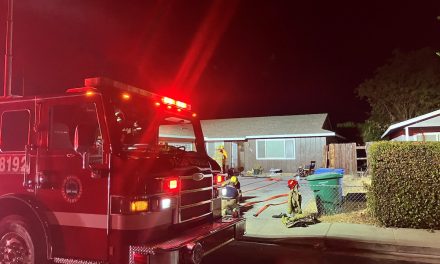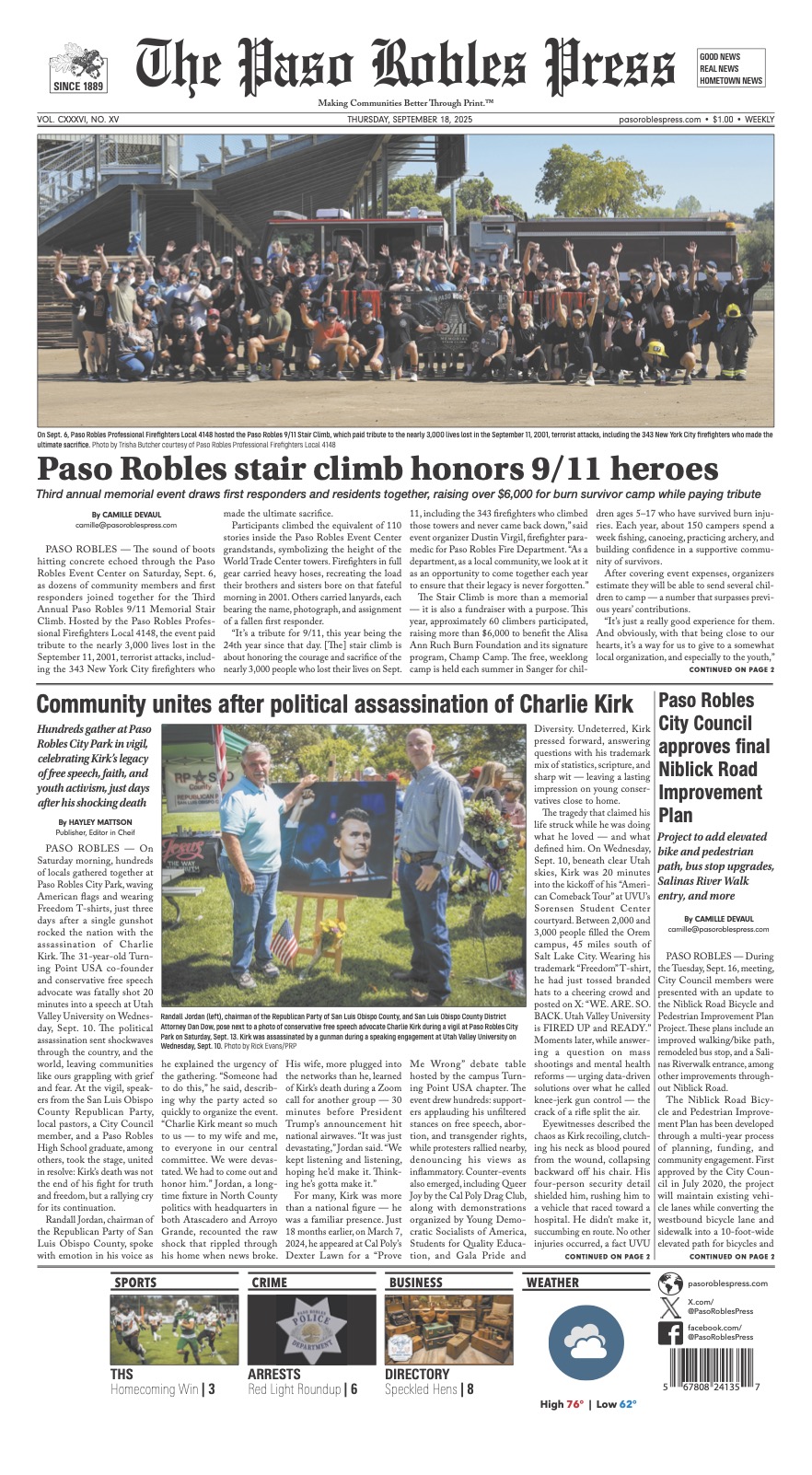Supervisors approve letter asking for Central Coast Region to be formed
SAN LUIS OBISPO — The San Luis Obispo County Board of Supervisors unanimously approved submitting a letter to the state asking for the formation of a Central Coast region that would include SLO, Santa Barbara and Ventura counties in the regional stay-at-home order.
The letter requests that the Central Coast Region be allowed to exit the regional stay home order as a region after three weeks if the ICU capacity in the three counties exceeds 15 percent.
Supervisors agreed to send the letter but were not hopeful it would lead to change. Supervisors were open to other municipalities piggybacking on their letter.
“I think it’s definitely worth trying,” said Board Chairwoman and Fourth District Supervisor Lynn Compton. “I’m skeptical that we will be allowed out of this.”
Gov. Gavin Newsom announced the regional stay-at-home order on Friday following a surge in COVID-19 cases across the state, including SLO County.
The new stay-at-home order is by regional hospital networks, rather than individual counties, and takes effect only when the available, total ICU capacity in a region drops below 15%.
The Southern California Region’s ICU capacity fell below 15% late Friday night and the stay-at-home order went into effect Sunday night. The order remains in effect for at least three weeks and, after that period, will be lifted when a region’s projected ICU capacity meets or exceeds 15%.
Public health officials from Santa Barbara and Ventura counties joined SLO County Public Health Officer Dr. Penny Borenstein in submitting a letter to the state on Monday, Dec. 7, asking for a Central Coast Region. Borenstein said the three counties had worked together for years.
“There are many ways in which this Central Coast region has been in place for a long time, and we are asking for consideration that region be the one that would apply to our County with respect to our ICU bed availability,” Borenstein said.
SLO County, as of Tuesday, had 14 people hospitalized due to COVID-19, with three in the ICU. The County has 53 total ICU beds available and 31 of those were in use, Borenstein said Tuesday morning.
If SLO County were in a region with Santa Barbara and Ventura counties, the ICU capacity of the proposed region would be 34%, according to Borenstein, and the stay-at-home order would not be triggered. The three counties are in the Purple Tier and would be operating under the guidelines of the Blueprint for a Safer Economy, which is less strict than the regional stay-at-home order.
There are five regions — Northern California, Greater Sacramento, Bay Area, San Joaquin Valley and Southern California, including San Luis Obispo County.
San Luis Obispo County is part of the Southern California Region, with Imperial, Inyo, Los Angeles, Mono, Orange, Riverside, San Bernardino, San Diego, Santa Barbara and Ventura counties.
The proposed Tri-County or Central Coast region would be the sixth region.
Under the regional stay-at-home order, essential businesses such as grocery stores must operate at 20% capacity; bars, wineries, salons and restaurant dining have to shut down; and hotels can only be open for critical infrastructure support.
Schools can remain open if they’ve received a waiver. Restaurants can continue take-out and delivery services.
Since learning of the regions, state and local officials, including Assemblyman Jordan Cunningham (R-35th District), and business and community leaders have been outspoken about being lumped in with Southern California.
“I hope and I pray that there is some financial component to this that helps our small businesses over the next three weeks,” said First District Supervisor John Peschong. “Just speaking for my constituents in the community, the small businesses, it’s going to be a tough three weeks before Christmas here. I hope the governor takes this seriously and removes us and lets us go with these two other counties.”
The SLO County Board of Supervisors spent nearly two hours on this matter, including 40 minutes of public comment. Nobody that commented was in favor of being part of the Southern California Region.
“I currently have 64 employees and they are begging me to stay open,” said Jennifer Ott, owner of five Supercuts hair salons in San Luis Obispo County. “They are choosing to buy food over paying their rent. I have a pregnant stylist whose husband was laid off; she is begging me to try to get us to stay open. This is our third closure. None of us can sustain this again.”
Some accused the governor of being a tyrant and questioned the validity of the testing. Many people asked the Board to disregard the stay-at-home order, stand up to the state and allow businesses and schools to open safely.
“I’m urging the Board of Supervisors to disregard, to ignore and to do everything possible to refuse to comply with this latest update from Gov. Newsom. This shutdown is unfounded and the scientific basis is actually no basis at all,” said Kathleen Goble of Atascadero. “We have to stop a governor who is absolutely corrupt and completely hell-bent on power. If we don’t stop this tyranny, it won’t end here.”
Compton said the Board was frustrated, but they needed to do what is best for the County and agreed the letter was the best course of action.
Newsom said there would be consequences for counties that did not follow or enforce the stay-at-home protocols.
“We have to remember that we are a subdivision of the state. We get almost half of our County funding here from the state and federal government,” Compton said. “If we just threw caution to the wind and said sue or we are just not going to follow anything, if you think there wouldn’t be serious ramifications, I don’t think you are considering the entire situation.”
Supervisors talked with SLO County Counsel Rita Neal about possible litigation but were advised that route would be unsuccessful. She explained that since March, there had been 48 cases filed against Gov. Newsom related to the pandemic, and all but one was unsuccessful. The one case centered more on mail-in-ballots continues and is being appealed.
Neal said the major challenge in these cases stems from the authority granted to not only the governor but the state public health officer. The stay-at-home orders have come from the governor and the state public health officer.
“Courts have been very clear in the past to say that local government’s can’t pass ordinances, resolutions, or any particular order that is in conflict with the state public health officer,” Neal said.
Neal added the Supreme Court has ruled on this in the past.
“Recognizing that the need to protect the public may trump individual rights during a crisis, the Supreme Court has held that states and municipalities have greater leeway to burden constitutionally protected rights during public emergencies,” Neal said.
Neal concluded by saying that from her perspective and colleagues around the state, “any litigation against the governor right now has a very slim chance of success.”
Next week supervisors plan to discuss sending a second letter and consider adopting the Healthy Communities Resolution to address local control, geographic diversity, the opening of schools and the distribution deadline for CARES Act relief funds.














